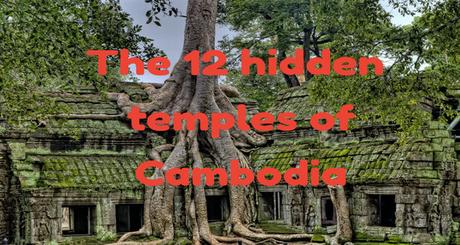
Cambodia is located in Southeast Asia in-between Thailand and Vietnam with Laos to the North. There are mountains to the North but the land is mostly flat. Cambodia's climate is hot and sunny all year round, with two seasons - the rainy season and the dry season.
Romduol is the national flower of Cambodia, a small yellow flower with a heady fragrance that can travel far and wide in the wind. The Romduol can grow to height of 12 metres and many can be found planted in Cambodia's public parks.
Cambodia can be accessed through three international airports - Phnom Penh, Siem Reap and Sihanouk International Airport- and two international sea ports - Sihanoukville and Phnom Penh Autonomous Port. Tourists can also enjoy travelling to Cambodia by land from neighbouring Laos, Thailand or Vietnam.
Phnom Penh once known as the "Pearl Of Asia", is the capital and largest city of Cambodia with plenty to see. It is now an economic, cultural and tourist center. Cambodians are by nature cordial and friendly.
The city, now a centre of diverse economic and urban development, is architecturally developed with many modern housing estates and high rise buildings including several mixed-used multi-storey development condominiums, business and recreation centres.
The riverfront is lined by chic pubs, bistros and boutique hotels. Smart little silk boutiques and galleries dot the side streets.
The Royal Palace, residence of the king of Cambodia, is located on the shore overlooking the confluence of four rivers, the Upper Mekong, the Lower Mekong, the Bassac and the Tonle Sap. The palace is an excellent example of traditional Khmer architecture and its 174,870 square metres contain the temple of the Emerald Buddha, tall spires and mural paintings.
The National Museum of Cambodia was inaugurated by King Sisowat in 1920 and the red buildings remain just as striking today. Supported by UNESCO, it houses more than 1400 valuable items including sculpture, ceramics, and the largest collection of Khmer art in the world.
Located at the cross-roads of the large boulevards of Preah Sihanouk and Peah Norodom, the Indepence Monument was built in 1958 to mark Cambodia's independence from France. The building is of a lotus-shaped stupa copied from the style of the 9th century Bakong temple in Angkor.
Behind the Independence Monument, stands another monument build in memoriam of the late king, Norodom Sihanouk. The 27-meter-tall shrine houses a 4.5 metres tall statue of the late king made from bronze.
Phsar Thmey - Central Market - was constructed in 1937 in the shape of a dome with four arms branching out into vast hallways housing myriad stalls. Inside the vast market, there are hundreds of stalls attracting bargain hunters from all around the world, selling everything from watches to underwear.
The Riverfront in Phnom Penh is where three rivers meet the Mekong, Tonle Spa and Bassac. It is home to a string of local restaurants, bars and international chains. Along the riverfront, pubs, eateries and restaurants keep the party vibe alive in this touristy part of town.
Choeung Ek Memorial - was an orchard and a Chinese cemetery which the Khmer Rouge regime turned into the infamous killing fields. The trip to Choeung Ek is usually combined with a visit to Toul Sleng Museum, the former S-21 Prison. This is the site of about 20 thousand victims, paintings of torture by Vann Nath, one of the few survivors of ToulSelng, are also on display.
Koh Dach - is a pitoresque island located on the banks of Mekong River on the upstream of the city. This secluded quaint island is a popular destination for the traveler who wants a break from hectic push and sell.
Except for a few potters and wood carvers, the island is dedicated almost entirely to silk weaving. Local workshops and street shops offer lots of other neat handicraft and souvenirs as well. Tourist can have an insight of the local villages and their lifestyle.
Phnom Penh Safari is an eco-friendly zoological park with more than 800 animals. Species that inhabit here include bears, ostriches, kangaroos, giraffes, tigers, dolphins and deer just to name a few.
Kirirom National Park - Visitors come here to see the high elevation pine forest and explore the ruined town and several mansions that belong to the king in the 1950s. There is now a resort with container homes and ground tents where tourists can experience the cool mountain environment and traditional ways of life.
Phnom Tamao Zoo is more a Wildlife Rescue Centre, than a Zoo, housing more than 1000 animals plus hundreds of exotic birds and reptiles. The zoo is situated at the Phnom Tamao area which enjoys picturesque surroundings comprising mountains and ancient temples.
The Cultural Village located 5km from the Angkor Wat temple, is a 210.000 sqm complex that houses miniatures of famous Cambodian historical buildings and structures featuring unique villages. There are daily performances depicting various Cambodian customs and traditions.
The Angkor Silk farm offers free guided tours of the process from the mulberry bushes cultivation to the production of silk fabrics and accessories. The Angkor Silk Farm also features a large showroom where you can buy high-quality silk products.
Angkor Panorama Museum an impressive theatre museum, is a product of a gran collaboration between the Cambodian government and North Korea. It houses panoramic murals of Angkorian history with one of the largest paintings in he world measuring 112.6×12.9m and featuring more than 45,000 people in it.
Wat Phnom temple has a close relationship with the capital city. This is in fact, a sanctuary founded by Dan Penh, a wealthy widow who in 1372, retrieved from the river a log with five Buddha statues in it and ordered to elevate a piece of her property on which to build a temple to house the statues.
Over the years, Wat Phnom has had numerous add-ons to the initial shrine that dwelt within the compound of this wonderful sanctuary. The most significant of which is the massive stupa that shrines the ashes of King Ponhea Yat who in 1434, built the city of Phnom Pen.
Angkor Wat is the most famous of the Angkorian temples. Back in the twelfth century when it was built by King Suryavaraman II, it was a temple dedicated to the Hindu god, Vishnu and took an estimate 30 years to build, and it was later dedicated to Buddhism.
Unusually for a Khmer temple, it's orientated to the West which has led experts to deduce that it was a funeral temple for King Surayvaraman II, because it faces the sun. Also bas-reliefs are designed to be viewed from left to right.
UNESCO has called Angkor Wat "One of the most important archaeological sites in South East Asia", being known also as the 7th Wonder of the World.
This fortified city built by King Javarayman VII in the late twelfth century, encapsulated the residence of priests, officials, military and administrative staff.
Peering out from between the tree branches are the old gods still protecting this ancient city and below them is a huge moat that surrounds the large outer wall. There are number of entry tower each with a causeway flanked by 54 stone figures on either side demons to the right and gods to the left.

